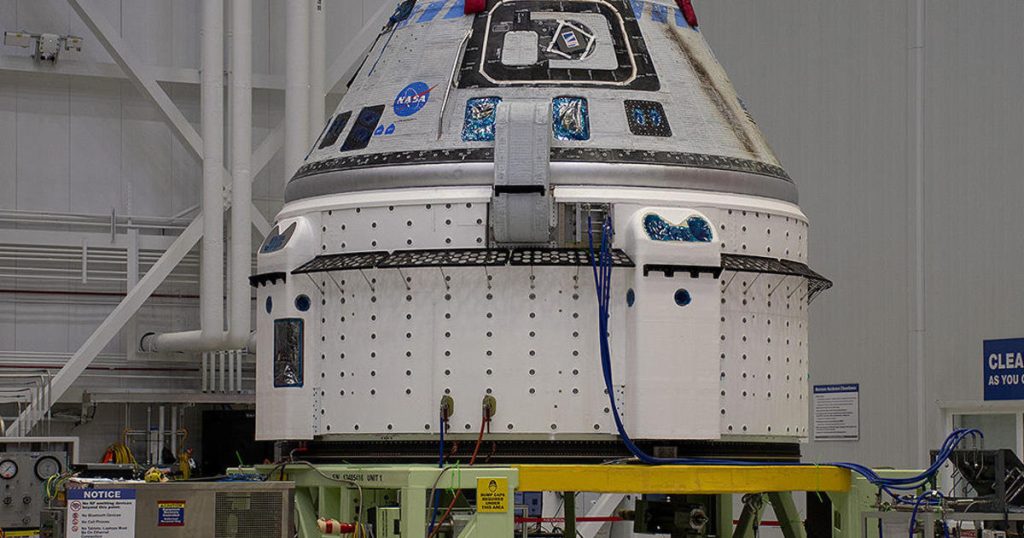After nearly three weeks of tests and data analysis, NASA has confirmed that Boeing’s Starliner crew capsule is safe to launch on June 1, despite a small helium leak in the propulsion system. Even if the seal causing the leak were to fail completely, the capsule could still fly safely, with the capability to handle up to four more leaks. The decision to delay the launch by nearly a month was made to allow for thorough analysis of the helium leak and its potential impact, giving the workforce time off over the Memorial Day holiday weekend. The crew members, commander Barry “Butch” Wilmore and co-pilot Sunita Williams, will return to Kennedy Space Center to prepare for launch on an Atlas 5 rocket.
Boeing engineers discovered a small helium leak in one of the Starliner’s propulsion modules during post-scrub procedures. The leak was traced to a flange where propellant lines feeding a specific thruster came together. Because propellant residues in the plumbing prevented immediate replacement of the seal, the capsule had to be hauled back to Boeing’s hangar for repairs, causing a longer delay. Tests and analysis were conducted to fully understand the leak and ensure it was not a concern for flight. The seal likely had a small defect that allowed helium to escape, and even with the seal removed, the Starliner could still safely operate.
The launch scrub on May 6 due to an issue with the Atlas 5’s upper stage valve brought the helium leak to everyone’s attention, allowing for a detailed investigation and root cause analysis. This incident also revealed a design vulnerability where the Starliner could lose redundancy for thruster firing during re-entry if adjacent doghouses were affected. Multiple de-orbit capabilities were designed, including using four OMAC thrusters, two working OMAC jets, or eight smaller RCS thrusters for the braking burn. In the event of two adjacent doghouses malfunctioning, a redundant method has been developed for a four-RCS-thruster deorbit burn to ensure safety during re-entry.
Boeing’s Starliner program manager, Mark Nappi, believes that the launch scrub had a positive outcome in identifying and understanding the helium leak. Tests and analysis have provided valuable insights that can lead to improvements in the system for future missions. The delay allowed for a thorough evaluation of the leak and its potential impact, ensuring the safety of the crew members and the success of the mission. Despite the challenges faced during the testing phase, the Starliner team remains confident in their ability to address any issues that may arise. The analysis conducted has provided valuable information regarding the spacecraft’s capabilities and areas for improvement in future missions.
The focus now remains on preparing for the rescheduled launch on June 1 and ensuring that all systems are functioning as expected. The crew will undergo final preparations and training before the launch, setting the stage for a successful mission to the International Space Station and a safe return to Earth. The collaboration between NASA and Boeing, along with thorough testing and analysis, has provided the confidence needed to proceed with the launch. The team’s dedication and expertise in resolving technical challenges have demonstrated their commitment to safety and mission success, further solidifying their ability to push the boundaries of space exploration. The upcoming launch represents another milestone in the commercial crew program, showcasing the advancements made in space technology and fostering continued collaboration between the government and private space industry.


